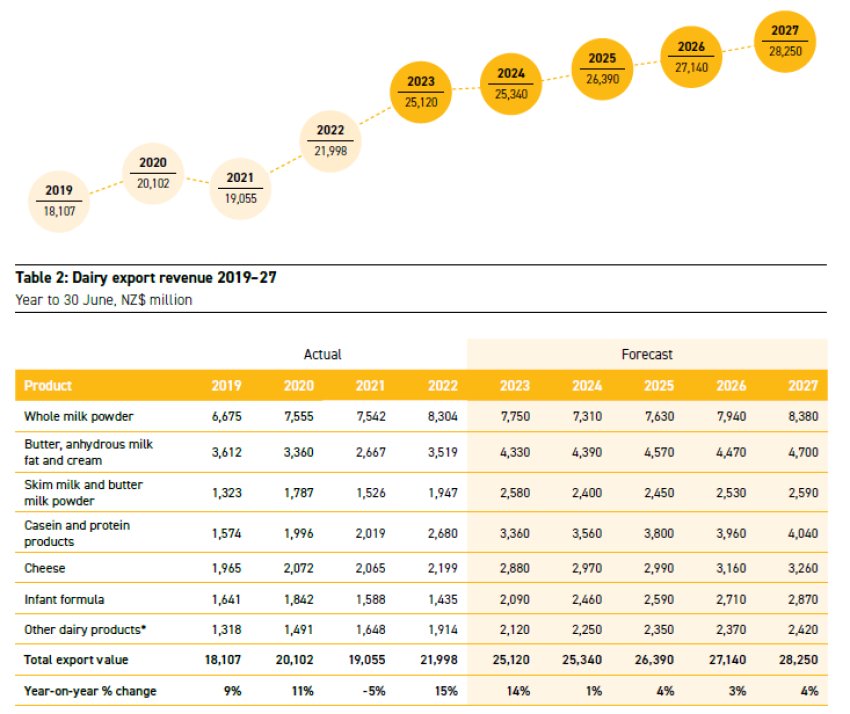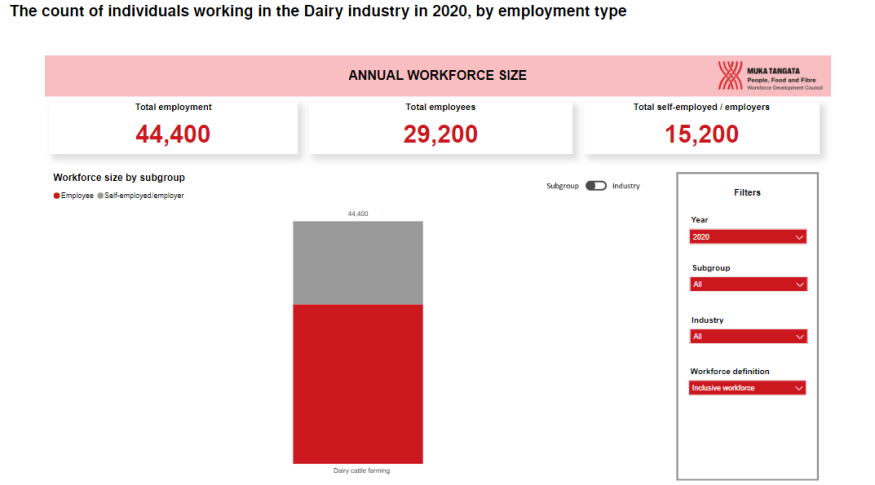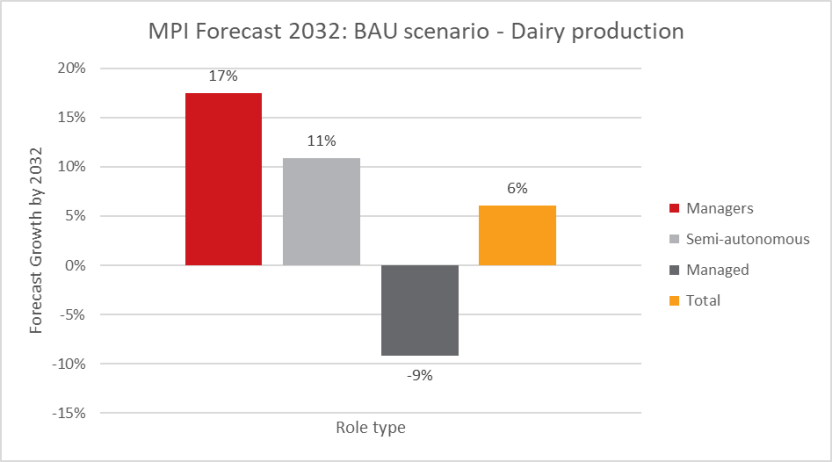Our Dairy Farming Workforce Development Plan contains further analysis of Industry, Workforce and Learner data trends.
Dairy industry trends
The industry remains critically important the NZ economy and trade and is forecasting export growth. The industry is dealing with significant changes from regulation, environmental and technological changes. These all drive the need for new skills to be brought into the sector.
Dairy is the country’s largest export earner1. Regulations are tightening while compliance is becoming more complicated and time-consuming, and costs keep rising2. Medium to long-term challenges for the industry include higher community and government expectations for the environment, water quality, biodiversity, and climate change3, as well as changing technologies and consumer tastes. New Zealand’s ambition of being carbon neutral by 2050 is placing considerable pressure on the dairy industry, with key policies such as the National Environmental Standards for Freshwater providing direction and controls on nitrogen pollution and high-risk farm practices4. Overall, despite the likely decline in milk supply, total dairy export volumes should remain similar to 2021/22. Supported largely by a weaker NZD and reduction in the supply of dairy products from key dairy exporting regions, export revenue is forecast to increase 6% and reach a record high level of $23.3 billion in the year to 30 June 2023. Dairy farming accounted for over 40% of total export revenue in the food and fibre sector for the year ending June 20225.

Dairy workforce trends
The workforce has experienced ongoing labour and skill shortage needs and has significant levels of seasonal variation (which affect how forecasts should be treated). The Dairy sector workforce as a whole is forecast to increase by at least 6% by 2032 with increases being particularly concentrated in higher skill role types that will require increased levels of training. The workforce currently has low levels of formal qualifications and would need a substantially higher than requested level of investment to reach industry benchmark parity (see Appendix C for more detail on the methodology). The sector has very strong reliance on those on temporary and work visas making the industry vulnerable to changes in immigration trends and policy shifts.
Dairy workforce overview and highlighted demographics
The Dairy industry has the third largest workforce out of all Muka Tangata industries. In 2020 there were 44,400 people working in the dairy industry, and the workforce was predominantly European/Pākehā (80%) with 13% identifying as Māori, 13% identifying as Asian, and less than 2% identifying as Pacific peoples6. Immigration is an important source of labour; however, there are persistent long-term labour force shortages in the dairy industry, and farmers remain under pressure due to workforce shortages7. Attracting New Zealanders into the industry rather than relying on foreign workers to fill the gaps where there are ongoing labour and skills shortages across a variety of roles is a key challenge. Also, operating a dairy farm in New Zealand is becoming increasingly complex.


Dairy workforce forecasts
MPI forecasts, using the conservative ‘BAU Scenario’, are for an increase in worker numbers – particularly in higher skill level roles. The Dairy workforce has seasonal peaks – this affects how forecasts should be interpreted as the forecasts below are based on a version of an annual ‘full time equivalent’ and therefore will underrepresent the number of actual workers forecast to be in the sector. We have mapped these forecasts to the roles and related qualifications for each of our industries and used them as an input to the level of increase requested for each qualification. See Appendix A: Translating MPI workforce forecasts to learner enrolment numbers for more details.


Footnotes
2. ANZ New Zealand Business Outlook | December 2022
3. https://www.dairynz.co.nz/news/dairy-committed-to-a-better-environment/
5. HYPERLINK "https://mukatangata.workforceskills.nz/explore-industries/dairy-farming/industry-3/"Industry » Muka Tangata Workforce Development Council
(mukatangata.workforceskills.nz)
7. Sub-043-DairyNZ.pdf (productivity.govt.nz)